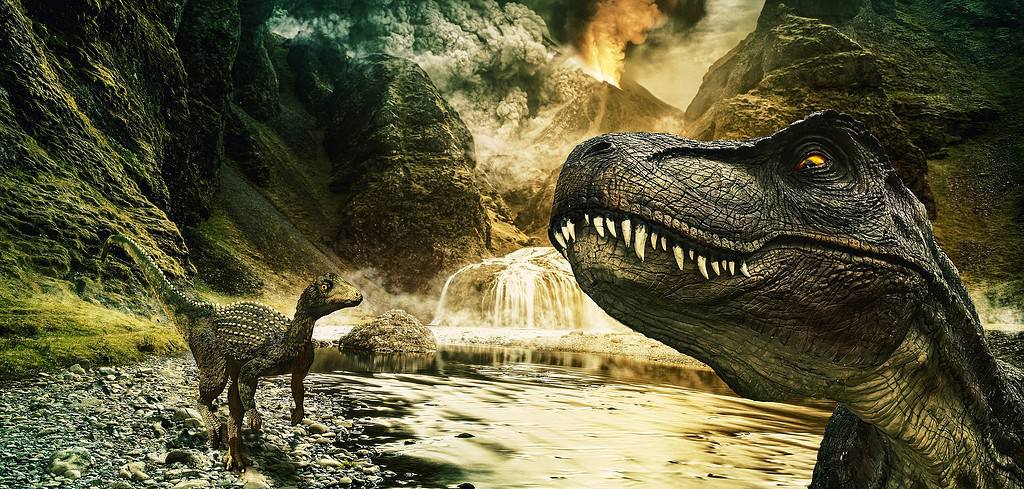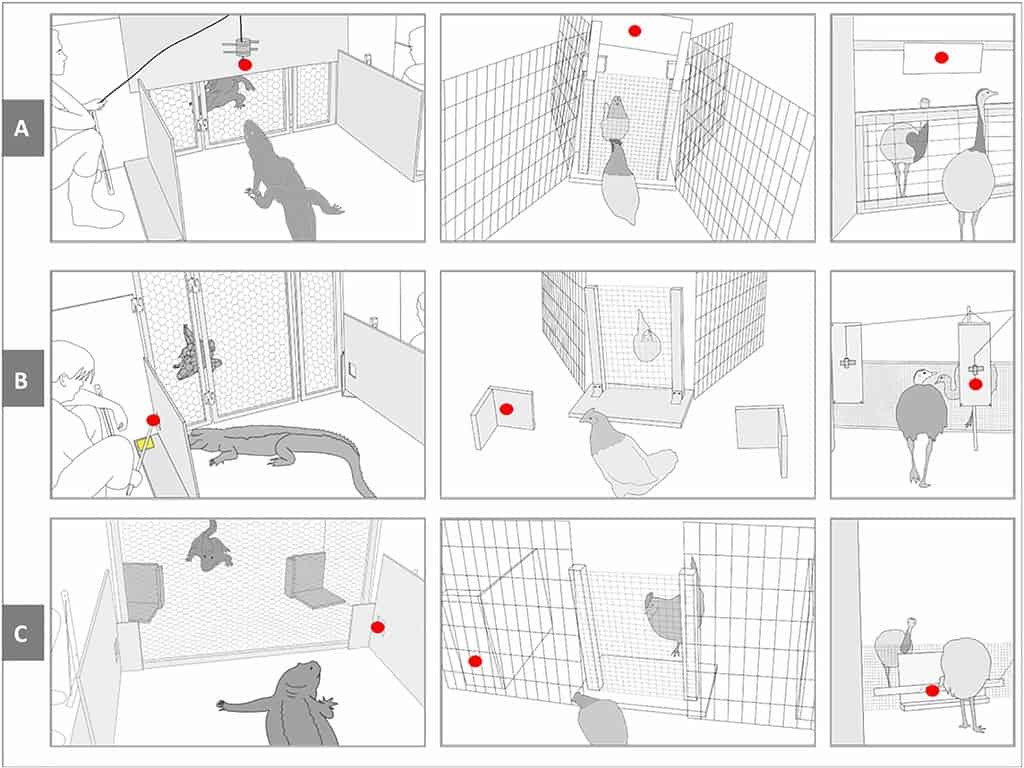
Have you ever found yourself instinctively following someone’s gaze, turning your head to see what they’re looking at? This simple, seemingly automatic action is often taken for granted. However, it’s a type of behavior that hides a very profound social ability.
Perspective-taking, or the ability to understand that others may see the world differently than you do, is generally considered a high-level cognitive function. Remarkably, a new study from Lund University suggests that dinosaurs, not mammals, may have been the first to develop this ability.
From gaze following to perspective-taking
When someone near you focuses on something in the environment, you’re likely to follow their gaze to see what caught their interest. This behavior, known as gaze following, is observed across various animal groups, including mammals, birds, and even reptiles. It’s an efficient way to gather information about the environment.
But imagine a scenario where the object of someone’s gaze is hidden from your immediate view. What do you do?
In humans, around the age of two, a more advanced behavior emerges. We start to reposition ourselves to see what the other person is seeing, indicating an understanding that their viewpoint might be different from our own. This ability, known as visual perspective-taking, serves as the foundation for understanding that others have minds different from our own.
Perspective-taking has been observed in only a handful of species, including apes, some monkeys, dogs, and ravens. In order to unravel the evolutionary origin of this social ability, researchers from Lund University turned their attention to dinosaurs.

By comparing alligators, birds’ closest living relatives, with the most primitive existing birds, the palaeognaths — species like ostriches, emus, rheas, and the flighted tinamous — they uncovered a surprising observation.
Alligators, despite sharing similar neuroanatomy with dinosaurs, did not demonstrate perspective-taking, although they did follow others’ gaze to a visible location. In contrast, all bird species tested exhibited this cognitive skill.
Unmasking Bird Intelligence
Moreover, the birds exhibited a behavior called “checking back,” where they look back into the eyes of the individual whose gaze they initially followed. If they couldn’t find anything in the initial direction of the gaze, they would re-track the gaze.
Interestingly, the emergence of palaeognath birds 110 million years ago predates the development of visual perspective-taking in the two mammalian groups—primates and dogs—by about 60 million years. This observation, coupled with the neuroanatomical similarities between these birds and their non-avian dinosaur ancestors, led the researchers to speculate that this cognitive skill could have originated even earlier in the dinosaur lineage.
The new findings challenge the prevailing notion that mammals are the cognitive gold standard in the animal kingdom. As senior author Prof. Mathias Osvath puts it, “Early in my career, crow birds earned the nickname ‘feathered apes’ due to their remarkable cognition. However, I’m beginning to question whether it would be more fitting to consider primates as honorary birds.”
This shift in perspective may be necessary as an increasing number of studies highlight the remarkable cognitive abilities of avian dinosaurs, or birds. Many birds, including ravens, crows, and parrots, are capable of extraordinary behavioral feats, from solving complex puzzles to tool-making.
Birds’ social behavior seems even more impressive. Birds not only engage in perspective-taking but also in other types of behavior that show they possess “theory of mind”, meaning they’re capable of inferring what other birds are thinking. For instance, crows are so clever that they will hide food in front of other birds, and then relocate said food when no one is looking.
Revising the history of intelligence
The researchers add that perspective-taking may have not been present in the earliest dinosaurs. Their brains were more akin to alligators, suggesting they may not have shared this capability. However, even if future studies find that visual perspective-taking is more prevalent among mammals than currently known, it’s still likely that dinosaurs were the early adopters.
Interestingly, the superior vision of dinosaurs, which includes modern-day birds, could be a factor in the early development of visual perspective-taking. Historically, many mammals were nocturnally adapted, meaning they relied less on their eyesight. It wasn’t until the emergence of primates and certain carnivorous mammals that our visual capabilities improved dramatically.
Overall, this study challenges a long-held assumption that mammals were the drivers of complex cognition and hints that our mammalian bias may need some adjustment. Instead of focusing exclusively on primates, dogs, and other mammals, scientists might start paying more attention to birds or even reptiles.
There may be a lot to learn from our feathered friends, and it is only through such diverse approaches that we can hope to unravel the true complexity of cognitive evolution.
“Birds are commonly being overlooked when it comes to their cognitive skills. Our findings show that they not only have several cognitive skills on par with those of apes, but that their forebears most likely had these skills long before they evolved in mammals,” said Dr. Claudia Zeiträg, the study’s first author.
“We still have much to learn about the minds of other creatures. We should not underestimate them, for they have had millions of years to develop complex cognitive skills that we are only beginning to understand,” Professor Osvath added.
The findings appeared in the journal Science Advances.



